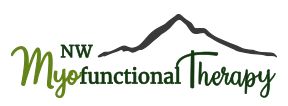Sleep apnea affects millions of people worldwide, causing interrupted breathing during sleep and leading to daytime fatigue and other health issues. While there are various treatment options available, myofunctional therapy is gaining attention for its natural approach to improving the function of oral muscles - including the all-important tongue.
Understanding the Role of the Tongue in Sleep Apnea
When it comes to sleep apnea, most people are aware that it involves breathing difficulties during sleep. However, what many may not realize is the significant role that the tongue plays in this condition.
The tongue is a powerful muscle located in the mouth and throat area. During sleep apnea episodes, this muscle can be a contributing factor to airway blockage. When we fall asleep, our muscles naturally relax, including those in our throat and tongue. For some individuals with sleep apnea, this relaxation causes their tongue to collapse backward into their airway, obstructing proper airflow. In essence, an obstructed or compromised airway leads to disrupted breathing patterns throughout the night. These interruptions can range from brief pauses in breathing to more severe cases where breathing stops entirely for several seconds or longer.
Understanding how the tongue impacts sleep apnea highlights why addressing its position and function through myofunctional therapy is crucial for effective treatment. By strengthening specific muscles around the mouth and throat area using targeted exercises, patients can improve their overall oral posture and reduce obstruction risks during sleep.
How Myofunctional Therapy Can Help with Sleep Apnea
Myofunctional therapy is a specialized treatment approach that focuses on improving the muscles of the mouth and face. This therapy can be incredibly beneficial for individuals suffering from sleep apnea, a condition characterized by interruptions in breathing during sleep.
One key factor in sleep apnea is the position of the tongue during sleep. When the tongue falls back into the throat, it can block the airway and lead to breathing problems. Myofunctional therapy aims to address this issue by strengthening and retraining the tongue muscles. During myofunctional therapy sessions, patients learn specific exercises designed to improve tongue posture and function. These exercises help promote proper alignment of the jaw and strengthen important muscles involved in swallowing and breathing.
By consistently practicing these exercises, individuals with sleep apnea can experience significant improvements in their symptoms. The strengthened tongue muscles are better able to maintain an open airway during sleep, reducing episodes of interrupted breathing. In addition to addressing issues with tongue placement, myofunctional therapy also targets other contributing factors for sleep apnea, such as oral habits like mouth breathing or teeth grinding. By correcting these habits through targeted exercises, myofunctional therapists effectively tackle multiple aspects of this complex condition.
Step-by-Step Guide to Tongue Exercises for Apnea
Step 1: Tongue Retraction Exercise
To begin, sit in a comfortable position with your back straight. Place the tip of your tongue on the roof of your mouth, just behind your front teeth. Slowly slide your tongue backward along the roof of your mouth towards the soft palate. Hold this position for a few seconds before gently releasing it. Repeat this exercise several times.
Step 2: Tongue Push-Ups
Next, press the middle part of your tongue against the roof of your mouth and push upwards as hard as you can. You should feel tension in the muscles at the base of your tongue and throat. Hold this position for a few seconds before relaxing and repeating.
Step 3: Lateral Tongue Movement
Now, stick out your tongue as far as possible and move it from side to side without touching any teeth or lips. This exercise helps to strengthen the muscles on both sides of your throat, which can improve airflow during sleep.
Step 4: Swallowing Exercise
In this exercise, swallow while keeping the tip of your tongue pressed firmly against the roof of your mouth. This helps to train proper swallowing techniques and can prevent backward movement of airway-blocking tissues.
Remember to perform these exercises consistently each day to see results over time!
NW Myofunctional Therapy is equipped with modern amenities and technologies that enable the best treatment opportunities. To know more, please call us at (206) 276-5294, schedule an appointment online, or email us at [email protected] to have a consultation with our team in Portland, OR, and we will be happy to help.
